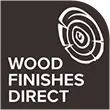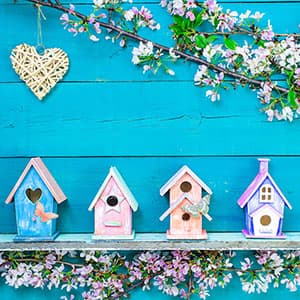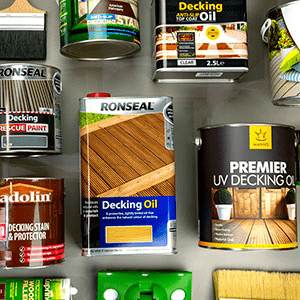Wood Varnish FAQ's
What is the advantage of a varnish?
Varnishes are tough, hard wearing and easily cleaned. Wood varnish is generally more durable than a wax or oil but is not as easy to maintain or repair if it becomes worn or damaged.
Whats the difference between lacquers and varnishes?
The retail market tends to search for Varnishes while the trade often refers to these products as Lacquers. Our lacquers section includes more solvent-based lacquers which tend to be used more by the trade. Varnishes are mostly water-based products which are recommended for use in the home. There isn't really a great deal of difference between them as a whole, its more familiar terminology
Is there a difference between a lacquer and a varnish?
In a word, no. The trade tends to refer to them as "lacquers" and the public tend to refer to them as "varnishes", but they are ultimately the same thing.
Can a water based varnish be applied over a water based stain?
In simple terms yes. Care must be taken however when applying the first coat of varnish over the stain. If using a brush or roller the first coat of varnish should be lightly applied and not overworked by repeated brushing or rolling. Excessive working of the varnish on top of the stain will re-hydrate the stain and may result in the dragging of the colour or the colour becoming intermixed with the clear varnish. A way to avoid this is to use solvent-based stains under water-based varnishes or water-based stains under solvent-based varnishes.
I have a worktop outside that I use to serve hot food from. It has already been painted yellow and I'm looking to protect it without changing the colour too much. What would you recommend?
Polyvine Decorators Varnish is an exterior-grade clear, water-based acrylic varnish for use on wood, paintwork, wallpaper, fabric, plaster and much more. It contains UV filters to protect coloured surfaces from fading and biocides that protect against algae, mildew and fungal attack.
Oils would not be suitable as they need to penetrate into the wood and cannot if the paint has formed a coating on the wood. They are also more likely to discolour the finish due to the nature of the ingredients they are made from.
We can never guarantee one manufacturers product over another and a test area is essential to test product suitability and final finish.
What is the best way to key a fresh coat of varnish?
Woodleys Sandpaper Sheets are fantastic sandpaper sheets great for almost any woodworking project. For lightly keying between coats, also known as de-nibbing, the finer grit of either P240 or P320 is advised for a fantastic finish. Also available in a larger quantity, as a large roll: Woodleys Sandpaper Roll Aluminium Oxide 115mm x 50m.
Alternatively, Woodleys Flexible Sanding Pads are double sided, abrasive pads with a flexible foam centre. They smooth microscopic "nibs" or "bumps" that can occur in-between varnish coats from settled, trapped dust.
What is the best varnish for overcoating clay/chalk paint?
If you don't fancy the shabby chic look you can strengthen a surface coated with clay or chalk paint with a perfectly clear varnish. These are usually water-based and need to be non-yellowing to avoid the discolouration of the paint.
Manns Extra Tough Interior Varnish is a clear, non-yellowing, polyurethane interior varnish that is suitable for any interior wooden project, including flooring. It is also available in 4 separate sheen levels to add a unique twist to the project if you require. Another great example is Polyvine Decorators Varnish. This ideal for almost any interior project including wood, fabric, wallpaper and much more. Unbeatable protection against finger marks, stains, scuffing and fading.
Hi does the water based 2pack lacquer have a shelf life, I was thinking with it being a 2 part it would last longer on the shelf?.
Most water-based lacquers or varnishes will last for at least a year if they are stored correctly and not allowed to freeze. Without knowing which specific lacquer you are referring to it's difficult to give a more specific answer.
The fact that it's 2-part or 2-pack doesn't really have any baring on the shelf life of the lacquer. The supplied catalyst only affects the product once mixed to provide a harder and usually quicker drying product.
Once the hardener or catalyst has been added to the lacquer it usually has a usable open time of around 4 hours. This can vary from one product to another so always check the manufacturers instructions and directions on the tin. It is recommended that only the amount required for each coat is mixed at any time to avoid product wastage. Any unused / unmixed product should last for 6 months to a year if stored correctly.
To get the best possible storage life out of the product, always follow the storage and usage instructions on the tin.
Are water-based varnishes any good?
In the early days when water based varnishes were first introduced to the market they were a pale comparison to their solvent-based alternatives. Over the decades the formulations have been vastly improved and they are now as good if not better than many solvent based varnishes. For example, water-based varnishes tend to be clearer (not like the old toffee-apple varnishes of the 60's and 70's) are much less smelly to use in confined spaces, and are safer for both the user and the environment. Many of the toughest and most durable varnishes available today are water-based.
Can I use yacht varnish on top of a wood preservative?
Preservers are always recommended before applying any exterior finish. Preservers help to prevent the wood from being affected by mould, algae and rot, giving the best possible protection. When applying a varnish or paint over the top it is important to ensure that any preserver used does not contain wax, as this will repel any water-based products that you try to apply over the top, causing adhesion issues.
Sticking with the same brand for compatibility is a better option. For example, Sadolin Yacht Varnish can be used over Sadolin Wood Preserver. If you find yourself using a different brands, we highly recommend that a test area is done to assess product suitability and compatibility. It's also worth keeping in mind that the top-coat manufacturer may not guarantee the performance of their topcoat if applied over a preservative from a different manufacturer.
Wood Varnish related blog posts
Disclaimer: Whilst every attempt has been made to provide product information that is as accurate as possible, it's important to clarify that trees and the wood that they produce can be affected by many factors. For example, the same species of tree grown in the same wood, even in close proximity, will be affected by age along with the amount of sunlight and water they receive. Other naturally occurring biological and environmental factors will also influence the density and grain of the wood as well as the moisture and oil content of the timber. No two trees are the same, meaning each piece of wood has the potential to look and react differently to the same wood finish. For example, product adhesion, colour variations, absorption rates and sheen levels. It is for this reason that we always strongly recommend carrying out test areas before starting any project


